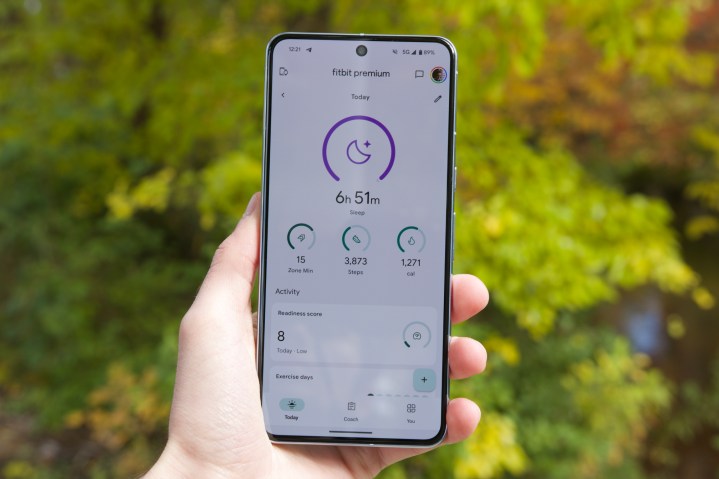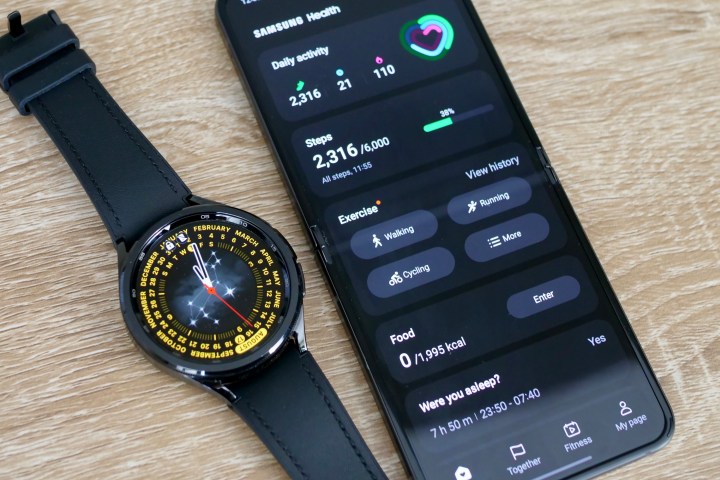
I’m looking forward to seeing the Samsung Galaxy S24, the Galaxy Z Fold and Z Flip 6, and especially a Samsung smart ring in 2024.
But in the back of my mind, there is one product I definitely don’t want to see from Samsung next year — one I fear may become inevitable. The Samsung Health app is currently completely free, and I don’t want to see the company turn it into a subscription-based service.
Fitness subscriptions are everywhere

I won’t be the first to complain about subscriptions for health and fitness wearables or the sheer number of subscription plans encouraging us to open our wallets even wider in general. Subscription fatigue is a real thing, and most of us will be conscious about not letting it get out of control. Finding, using, and recommending a completely free platform is a wonderful thing, but one that is becoming rare.
Samsung Health is one of those few recommended health platforms that doesn’t require any payment at all. You can access all its data, see all the trends, use all the features, and even dig into a surprisingly extensive library of workouts and health-related sessions all without spending anything extra on the devices used to access and feed it with data. The app looks good and is easy to understand, which means you’ll probably use it for longer.
Apple’s Health and Fitness apps are very similar, but they take a slightly different approach by only charging a monthly subscription to Apple Fitness+ and all its workout programs. This is perfectly acceptable as it’s not driven by your data, and you have to want to use the service before paying. Both Samsung and Apple do the opposite to Google, Fitbit, and the Pixel Watch 2, where you must pay $10 per month to see, make use of, and fully interpret all of your own data. If you don’t, you’ll miss out on a lot of helpful insights and features.
One path leads to the dark side

These are the two ways companies seem to approach subscriptions in the health and fitness world. Fitbit, Oura, Whoop, and others all use subscriptions to access general data, and when you don’t pay, the devices range from compromised to entirely useless. Companies like Garmin, Withings, and Apple all use subscriptions for services that enhance the experience. For example, Garmin’s subscription-based features cover niche activities like sailing, live satellite tracking, and virtual cycling routines.
One is more acceptable than the other, and a company that currently does not operate any kind of pay system for its apps has a choice of which one to adopt if it decides this is the path it wants to take. Charging for additional services that may not have a wide appeal, as Garmin does, likely makes these features possible in the first place — and is, therefore, entirely reasonable. Charging to see the data I supply or to have it presented and interpreted is not.

I am concerned Samsung is at this crossroads and is deep into the process of deciding which path to take. In May 2023, a report from a Korean news source quoted Samsung’s digital health team head, Hon Pak, who said about Samsung Health:
“Right now the service is completely free but we are exploring different options. In the future, we are contemplating a premium model or a subscription-based service.”
The report also talked about Samsung and Pak’s commitment to improving sleep tracking and a comprehensive sleep health update was introduced and promoted with the Galaxy Watch 6 series. Active plans were clearly being discussed in the report at the time, and it made me nervous, especially now we’re coming to the perfect time for Samsung to put its next plan into action.
Galaxy S24 and Samsung Health Plus?

In the coming year, there will be plenty of opportunities for Samsung to show off “Samsung Health Plus” or whatever it may decide to call its health-pay-to-play feature. We’re not far away from its first major event, as the Galaxy S24 series will likely arrive early in 2024.
If Samsung has been looking at introducing a subscription-based addition to Samsung Health, it may do so with this popular product line. Alternatively, it may wait until the Galaxy Watch 7 series closer to the end of the year — or when it decides to make the Samsung Ring a real product, as Oura has already linked smart rings with subscriptions in the public consciousness.
But the timing is less important than what it may announce. Samsung Health is one of the better platforms out there, and when I compared it to Apple Health, it was difficult to split the two, with both doing an excellent job of keeping me informed for free. It pairs really well with the brilliant Galaxy Watch 6 Classic, and I have no problem recommending them. It’s far harder to do the same with the Google Pixel Watch 2 and the Fitbit platform, mainly because of the high, ongoing cost involved.
Hopefully, I’m worrying about something that won’t happen. But if it does, and a subscription-based platform from Samsung becomes a reality, I sincerely hope it chooses the path taken by Apple and Garmin and not the one taken by Fitbit and Oura. I don’t want Samsung to ruin a great product by forcing us to consider yet another subscription for a health and fitness wearable.



